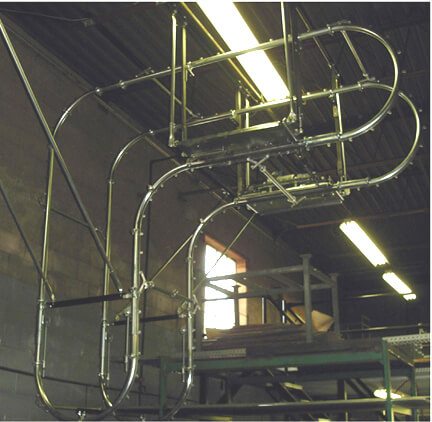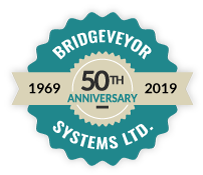Is There a Typical Overhead Conveyor Application?
Without getting into a long preamble, the straight answer to the question posed in the title above is: no, there is no typical application of an overhead conveyor system. At least not that we have ever found in 46 years of conveyor manufacturing. Each installation of our C-250™ conveyor is unique.
Even when installed in businesses within the same industrial sector. Like automobile manufacturing, each conveyor is different for a number of reasons. Including the purpose of the conveyor, the limitations of the space it must operate in and the load it must carry, among many other variables.
A “Typical” Overhead Conveyor Installation
If each conveyor is unique, if only in the layout. When you look in detail at what one particular system is designed to do. It will give you an idea of some of the parameters around which a “typical” system must operate.
Seeburn Metal Products in Tottenham, Ontario, has used two C-250™ conveyor lines since 1984. A manufacturer of automobile jacks, Seeburn needed a conveyor system that had the flexibility and durability to reliably perform a number of unique operations.
Here are just a few of the details of just one of Seeburn’s overhead conveyor installations:
- The conveyor runs for over 1,000 ft. and travels at 7 ft. per minute.
- Specially-designed carrier hooks were developed to carry four jacks per hook.
- Jacks are loaded onto the conveyor at an assembly station.
- The conveyor then transports the jacks through a high-heat phosphate wash in preparation for painting. The enclosed-track design of the conveyor protects the drive chain from the chemicals in the wash.
- After carrying the jacks through a drying tunnel, the conveyor moves them into the paint dipping station.
- Freshly painted and traveling at ceiling level, the jacks are carried through high-temperature ovens to “bake on” the paint.
- After baking, the jacks move across a section of conveyor long enough to let them cool before they are brought back down to floor level to be removed from the conveyor.
- The empty carriers are then conveyed through a dip tank, where the paint over-spray is dissolved, before they are returned to the assembly station to start the process all over again.
That is about as “typical” as it gets, but it isn’t typical at all. Even if you’re an automobile jack manufacturer, your C-250™ will be built exactly to your specifications.












